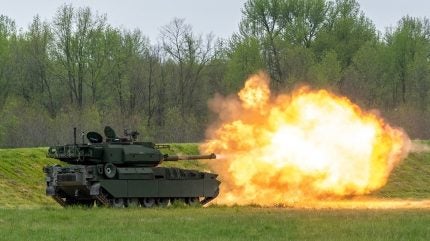
The US Army has placed another order for more M10 Booker combat vehicles with the prime contractor and original equipment manufacturer, General Dynamics Land Systems (GDLS), as part of the low-rate initial production phase.
Booker’s unique design is intended to offer the Army’s Infantry Brigade Combat Teams with protected mobile fires.

Discover B2B Marketing That Performs
Combine business intelligence and editorial excellence to reach engaged professionals across 36 leading media platforms.
The tracked vehicle – which lies somewhere between a tank and an infantry fighting vehicle – is capable of supporting troops and suppressing or destroying entrenched hostiles and enemy fortifications.
LRIP production so far
Valued at $323m, the latest contract will produce additional M10 LRIP units, though the company has not disclosed the exact number. Nevertheless, it follows a string of previous orders for more vehicles: including a deal for 26 more units in July 2023, which marked the second phase of LRIP production.
Originally, the LRIP phase began with an order for 96 vehicles in GDLS’ first M10 contract with the US government agreed in June last year.
Initial operational testing and evaluation are planned for the end of FY 2024. The first unit equipped is scheduled for Q4 2025, consisting of a battalion of 42 M10s.

US Tariffs are shifting - will you react or anticipate?
Don’t let policy changes catch you off guard. Stay proactive with real-time data and expert analysis.
By GlobalDataEach LRIP system is expected to cost approximately $12.8m. Full-rate production M10 systems are expected to cost less than LRIP variants and may include modifications based on operational testing and evaluation results.
Too early to tell what FOC units will look like
The call to increase LRIP units suggests that GDLS is still in the process of ironing out the platform before full-rate production.
It is too early to tell what inevitable changes will be made in the eventual standard platform configuration when the Army reaches full operational capability (FOC) between 2030-2035.
Even so, the M10 production process so far has proven successful as one of the few examples of timely industrial output in an age of intense military demand around the world.
Other programmes have faced enduring delays and considerable cost overruns, such as the British Ajax armoured vehicle or the F-35 Joint Strike Fighter’s Block IV modernisation.



